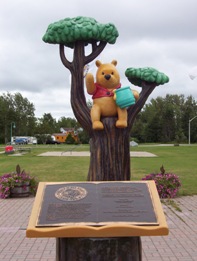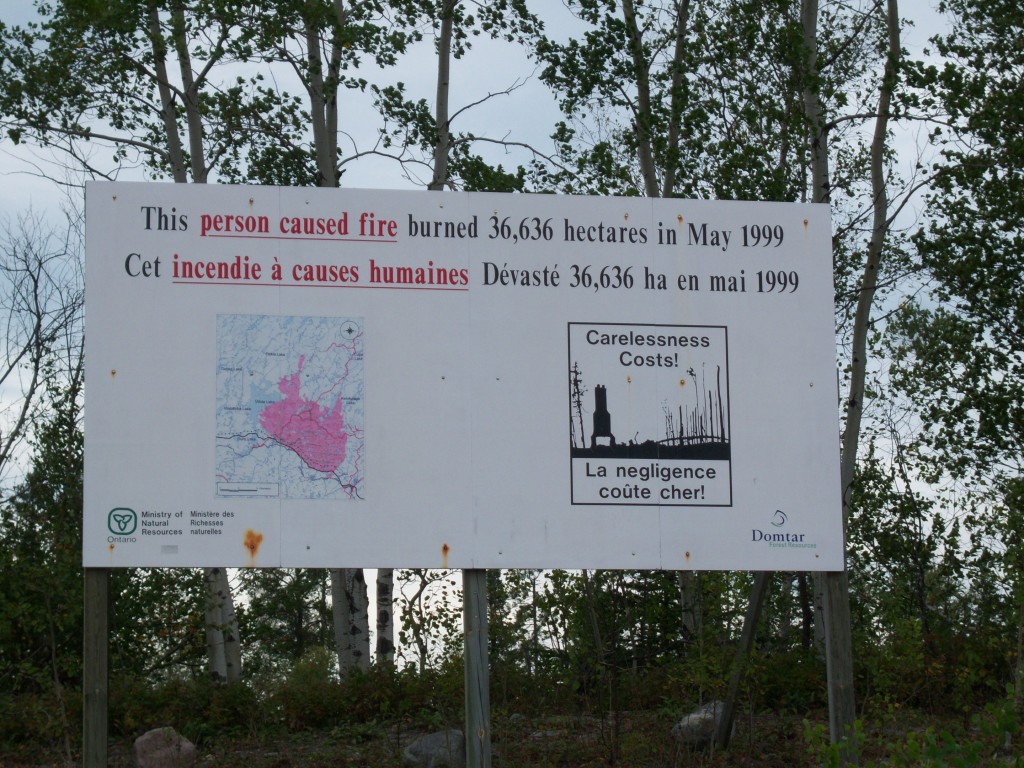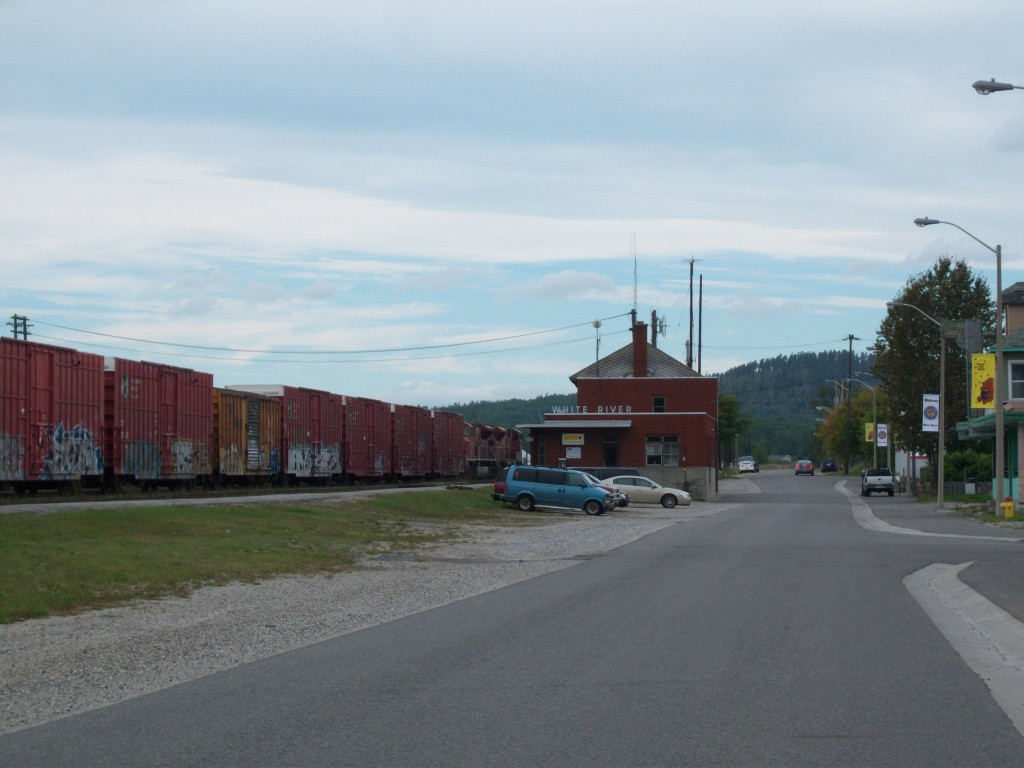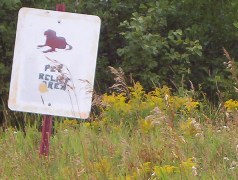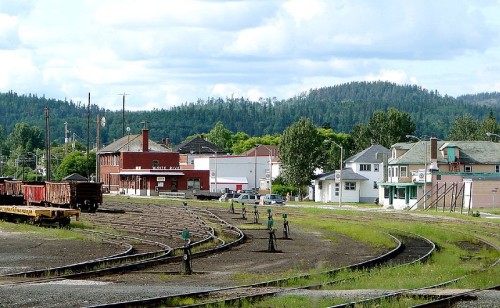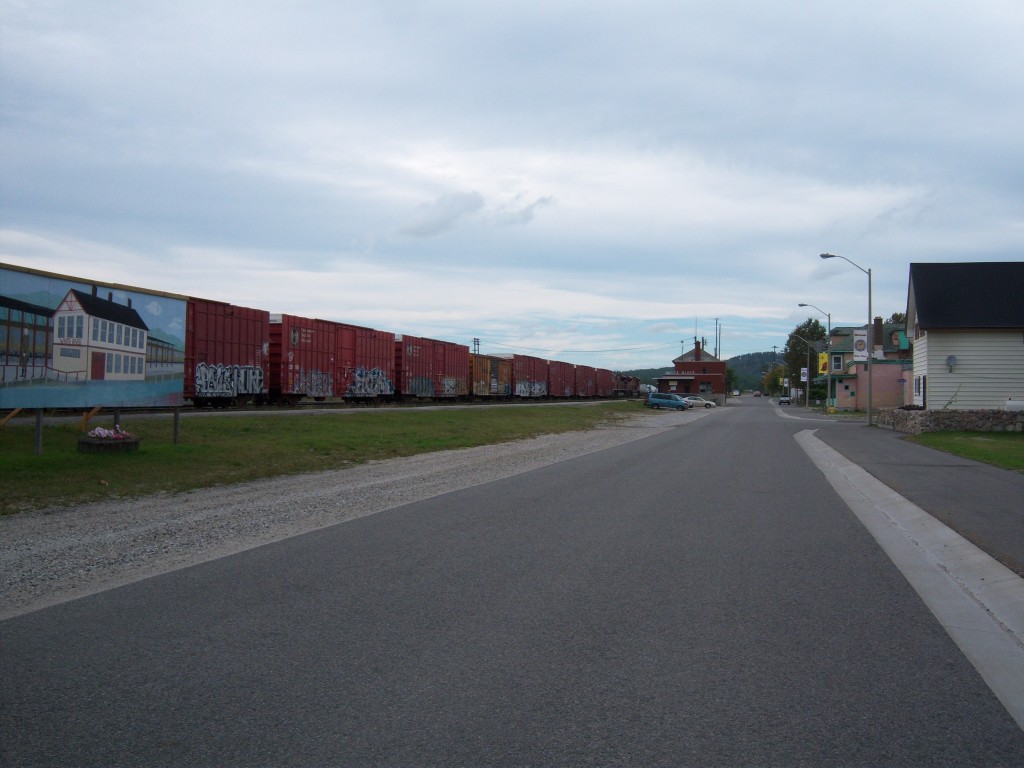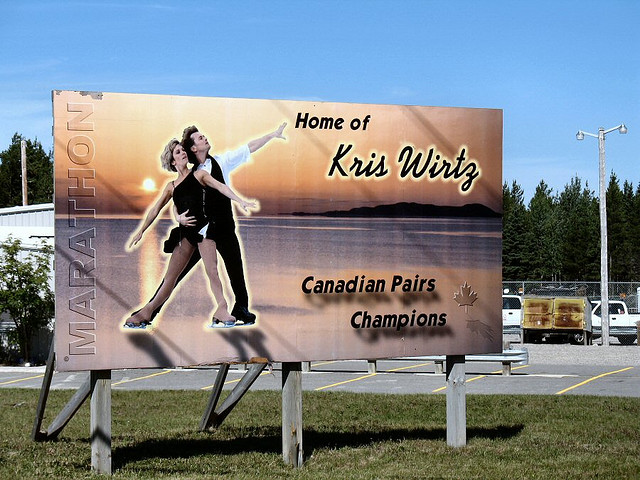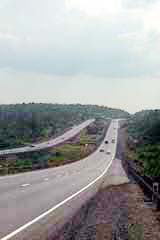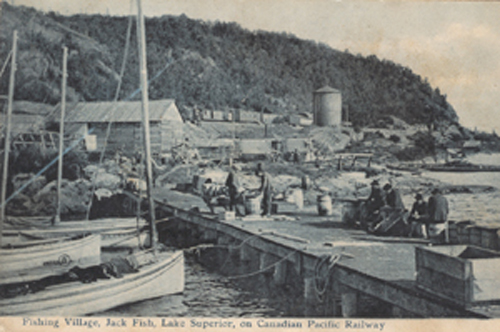
Hornepayne is home to three bears, as compared to White River‘s one
Hornepayne was founded in 1928. The town sign doesn’t announce the population. I don’t think it can be more than 500, although everything I’ve read since my visit says that it is closer to 1000. It is about an hour and a half southwest of Hearst on Highway 631.
“Home of the three bears”, Hornepayne is a railway town that’s seems to be in a bit of decline now that the railway isn’t so important. Hornepayne proudly boasts having one of the last indoor roundhouses in the world. Via trains still stop here.
For food, there is the Packsack Deli in an old barn across from the train tracks (turn left at the three bears), as well as Virginia’s Diner which opens at 6 AM for breakfast. There’s also what they call a mall with an LCBO, a Northern Store, Craig’s Bar, and a sign advertising “Bars, Rooms, Food” so I assume there is some kind of motel inside. For shopping, there’s Cindy’s This and That and the Passtime General Store.
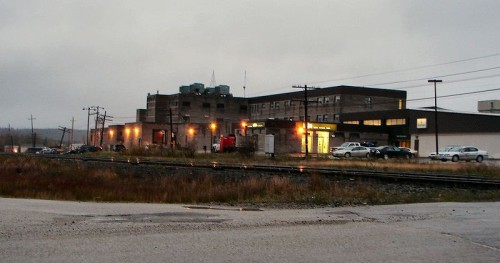
Hornepayne used to have a little mall, but it closed in 2011 after 29 years. Sad. (Photo credit: P199 from Wiki Commons)
I don’t know how much there is to do, although there is a snowmobiling club in the winter, and, of course hunting and fishing nearby.
And I can’t comment much more than that. Hornepayne is pretty out of the way, so I’ve only been through it once. And that time was at 7AM on a stat holiday so it was pretty quiet. It is one of those visits where, in hindsight, I can’t believe I was willing to be so conspicuous as to take random photos of random things in a town so small and out of the way. I guess I was gutsy in the summer of 2006.
If you’re stopping in Hornepayne to use a washroom, use the newer gas station south of the town. The Esso north of town is cramped, and there are few spots to safely pull over your car on the road north of town if the wilderness arouses the call of nature while you’re on your way to Hearst.


